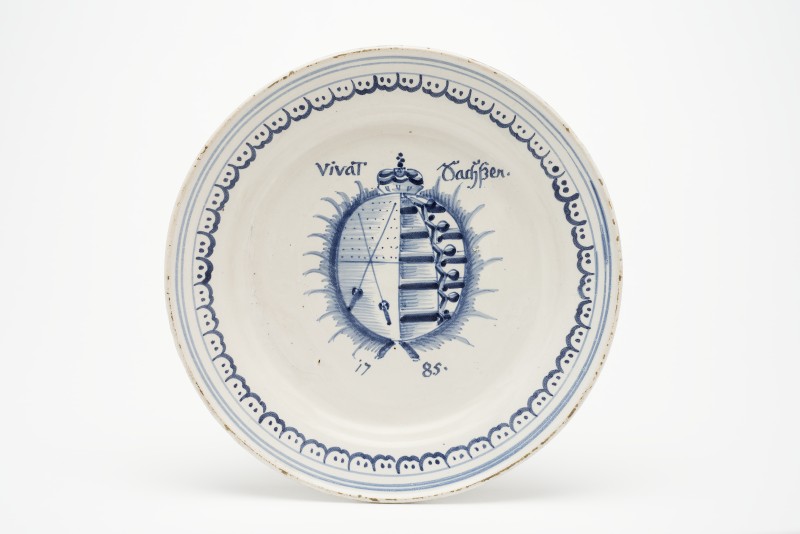Flacher Teller mit steilem Anstieg und schräg ansteigender Fahne mit nach oben gebogenem Lippenrand.
Im Zentrum des Spiegels das kursächsische Wappen (Kurschwerter und Rautenkranz), umgeben von zwei sich unten kreuzenden Blattzweigen. Darüber die Inschrift: „Vivat Sachßen“, darunter „1785“. Auf der Fahne drei blaue Streifen mit Bordüre aus Halbkreisen mit jeweils zwei Punkten. Vergl. Teller mit Inv. Nr. 1913.69.
Sprung im Spiegel gefestigt. Glasurabplatzungen am Lippenrand.
Marke in Blau auf dem Boden: „V“, darunter Querstrich
Ankauf von Getrud Freifrau von Nordeck, Döbbelin bei Stendal. Ehemals Sammlung Dr. Hans Heinrich Demiani
en

